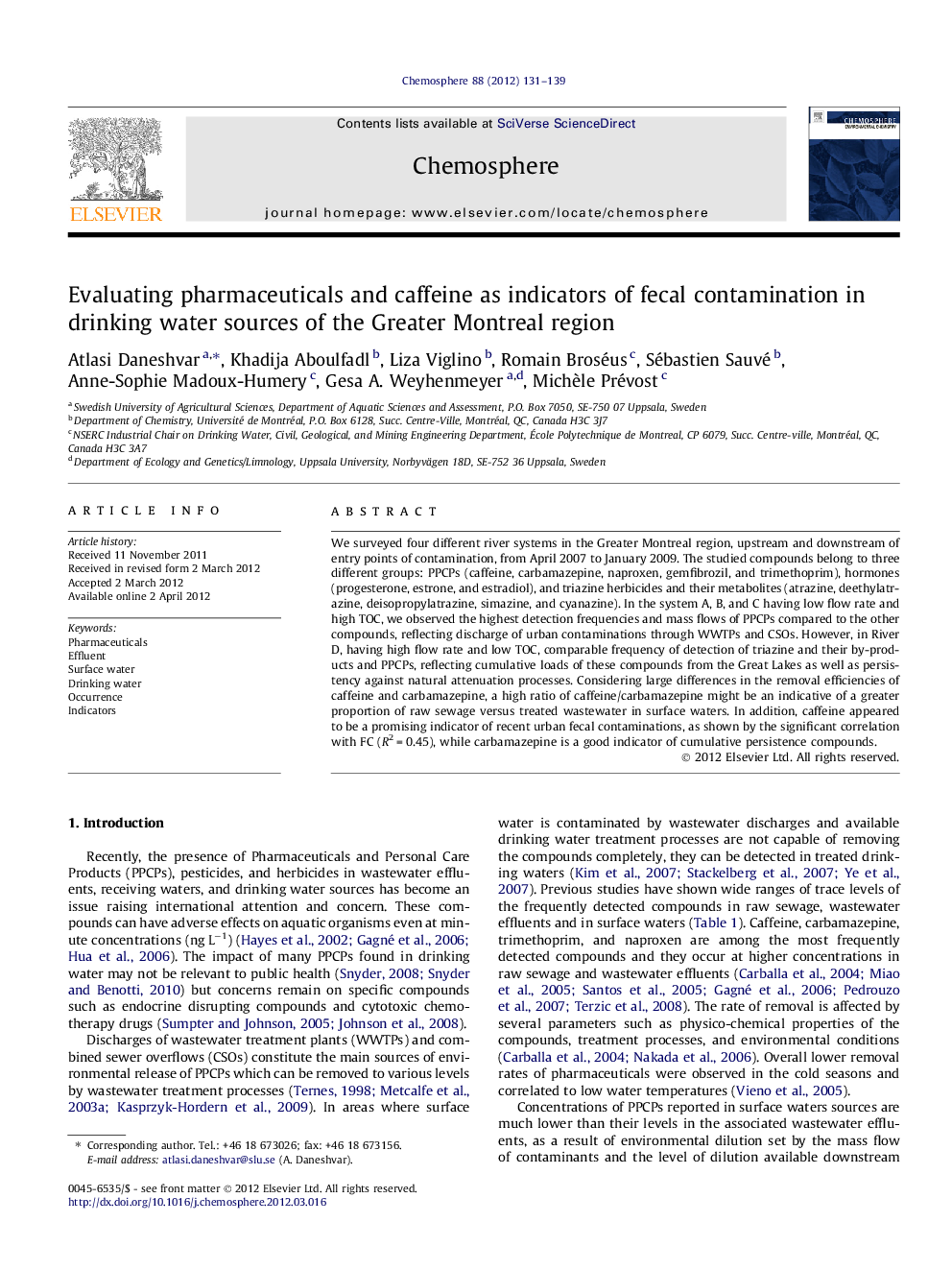| Article ID | Journal | Published Year | Pages | File Type |
|---|---|---|---|---|
| 4410273 | Chemosphere | 2012 | 9 Pages |
We surveyed four different river systems in the Greater Montreal region, upstream and downstream of entry points of contamination, from April 2007 to January 2009. The studied compounds belong to three different groups: PPCPs (caffeine, carbamazepine, naproxen, gemfibrozil, and trimethoprim), hormones (progesterone, estrone, and estradiol), and triazine herbicides and their metabolites (atrazine, deethylatrazine, deisopropylatrazine, simazine, and cyanazine). In the system A, B, and C having low flow rate and high TOC, we observed the highest detection frequencies and mass flows of PPCPs compared to the other compounds, reflecting discharge of urban contaminations through WWTPs and CSOs. However, in River D, having high flow rate and low TOC, comparable frequency of detection of triazine and their by-products and PPCPs, reflecting cumulative loads of these compounds from the Great Lakes as well as persistency against natural attenuation processes. Considering large differences in the removal efficiencies of caffeine and carbamazepine, a high ratio of caffeine/carbamazepine might be an indicative of a greater proportion of raw sewage versus treated wastewater in surface waters. In addition, caffeine appeared to be a promising indicator of recent urban fecal contaminations, as shown by the significant correlation with FC (R2 = 0.45), while carbamazepine is a good indicator of cumulative persistence compounds.
► Characteristics of drug sources control their detection frequency and concentrations. ► A high caffeine/carbamazepine might be an indicative of raw sewage discharge in rivers. ► Caffeine concentrations and fecal coliforms were correlated in four rivers (R2 = 0.45). ► Caffeine is a promising indicator of recent urban fecal contaminations. ► Carbamazepine is a good indicator of cumulative persistent compounds.
